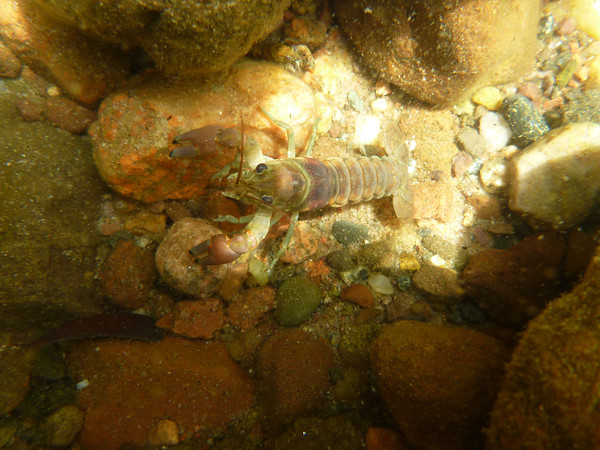In the early 2000s, researchers at the University of Wisconsin-Madison began an eight-year battle against an invasive species found in northern Wisconsin’s Sparkling lake.
Orconectes rusticus, known as the rusty crayfish, was mowing down native plants, to better spot approaching predators, and outcompeting native crayfish. It consumed the eggs of native fish, and left other species without vegetative cover. Researchers were concerned about the ecology of the lake, and soon began removing the crayfish, setting up 300 mesh traps near the shore.
When the removal experiment began, researchers were catching as many as a thousand rusty crayfish a day. But what to do with all those crawdads? Eat them, of course. Three times a week, in crawfish boils or étouffée. There was always a five-gallon bucket of crayfish in the fridge.
Today, the population of the rusty crayfish has declined drastically, and fish, insect, and plant communities have made a comeback since in Sparkling Lake. Read more about the removal of the rusty crayfish here.
Gretchen Hansen, a postdoctoral researcher at the Center for Limnology, University of Wisconsin-Madison, played a central part in the field effort. Hansen says that while they did not eradicate the rusty crawfish, they were successful in reducing their densities to about 1% of what they were. Eating invaders didn’t eradicate the crayfish, she notes, but it was “a happy side effect.” Hansen shared a couple of the researchers’ favorite recipes with us. THe étouffée was a family recipe from one of the researchers, the crawfish boil from the Food Network.
3 cups long grain white rice
6 cups water
3/4 cup butter
1 large onion, chopped
1 clove garlic, chopped
1/4 cup all-purpose flour
1 pound Sparkling Lake crawfish* tails, cooked
2 tablespoons canned tomato sauce
1 can diced tomatoes, drained
1 cup water or broth, or as needed
6 green onions, chopped
salt and pepper to taste
1 1/2 tablespoons Cajun seasoning, or to taste
Combine the rice and water in a saucepan, and bring to a boil. Cover, and reduce heat to low. Simmer for 15 to 20 minutes, until rice is tender and water has been absorbed.
While the rice is cooking, melt the butter in a large skillet over medium heat. Add the onion, and saute until transparent. Stir in the garlic, and cook for a minute. Stir in the flour until well blended. Gradually stir in the tomato sauce and water/broth, then add the tomatoes and bring to a simmer. Add the crawfish tails and green onions and season with salt, pepper, and Cajun seasoning. Simmer until the crawfish is warmed but not tough. Serve over hot cooked rice.
Low Country Boil
Adapted from the Food Network

Crab boil seasoning (such as Zatarain’s available in specialty grocers or online), 2 teaspoons per quart of water or to taste
12 red new potatoes
6 (4-inch) smoked sausage links
6 ears corn
3 pounds Sparkling Lake crayfish*
Fill a large pot with enough water to cover all of the ingredients.
Add the crab boil seasoning and bring to a boil. Adjust the crab boil to suit your taste. When the water boils, add the potatoes and sausage. Cook on medium heat for 20 minutes. Add corn and cook for an additional 10 minutes. Add crayfish and cook until bright red. Drain and serve with warm bread and lots of melted butter.
For more updates and pictures on the rusty removal in Sparkling Lake, visit the UW-Madison Center for Limnology page.
*Other streams and lakes can be used; see, for example, the USGS rusty crayfish fact sheet.



























